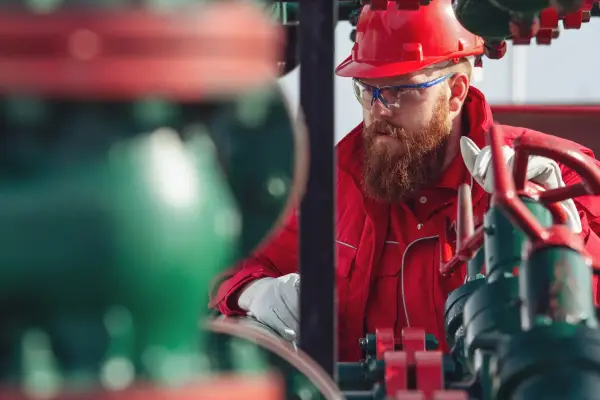

Safety in the ATEX Zone
Unsafe use of electrical and non-electrical devices in hazardous explosive environments (ATEX Zones) can have serious consequences, such as loss of life or physical harm. To minimize the risk of explosions, European ATEX directives and standards have been established to regulate the requirements for devices and safety systems used in areas with potential explosion hazards.
What is a ATEX Zone
ATEX zones are potentially explosive environments. These zones are classified according to the ATEX guidelines, a European directive that determines safety standards for equipment and protection systems. The division into zones helps organizations assess the risks and take the appropriate safety measures.
An explosion can have significant implications for your organisation. If you do not comply with the European guidelines in the field of
explosion safety
, your organization risks fines, claims for damages and negative publicity or striking employees.
The foundation for an explosion in an ATEX zone
For an explosion to occur, the following three elements must be present:
- Combustible substance, such as gas, vapor, mist, or dust particles
- Oxygen
- Ignition source
The likelihood of explosions can be reduced by eliminating or suppressing any of these three elements. In many cases, it's not feasible to remove the combustible substance due to operational requirements. Similarly, oxygen cannot be eliminated in environments where personnel are present. Therefore, removing or neutralizing the ignition source is often the most effective method to minimize the risk of explosions.
Overview of ATEX zones
An ATEX zone is an area where there is a potential explosive atmosphere. There are different ATEX zones, categorized into gas and dust zones. Each ATEX zone has its own risks and corresponding regulations. DEKRA certifies against the following ATEX zones.
| ATEX Zones | Type of explosion hazard | Definition |
| undefined | Gas explosion hazard | Explosive gas atmosphere present continuously or for long periods. |
| undefined | Gas explosion hazard | Explosive gas atmosphere present occasionally during normal operation. |
| undefined | Gas explosion hazard | Explosive gas atmosphere unlikely to occur or only for short periods during normal operation. |
| undefined | Dust explosion hazard | Explosive dust atmosphere present continuously or for long periods. |
| undefined | Dust explosion hazard | Explosive dust atmosphere present occasionally during normal operation. |
| undefined | Dust explosion hazard | Explosive dust atmosphere unlikely to occur or only for short periods during normal operation. |
ATEX zone certifications
for minimizing the risk of explosion hazards
DEKRA certifies products according to the ATEX 114 directive and the applicable standards outlined below. This directive and standards apply to devices and safety systems used in potentially explosive atmospheres.
ATEX 114 certification
As a European Notified Body, we test, assess, and certify products according to ATEX Directive 2014/34/EU (ATEX 114). An international team with colleagues in the Netherlands, Germany, America, Korea, and Japan assess and certify ATEX products. Testing is conducted in the Netherlands, Germany, and Korea. Products that comply with the applicable standards under ATEX 114 receive an ATEX certificate and display the ATEX marking.
More about the ATEX 114 directive
ATEX 153 (formerly ATEX 137) is an extension of ATEX 114 and sets minimum requirements for improving the protection of workers in work environments where explosive atmospheres may occur.
ATEX 153 certification
The directive obliges employers to conduct a thorough risk assessment and take appropriate measures to prevent or mitigate explosion risks. This includes the use of safe equipment, appropriate safety systems, and providing clear instructions and training to employees.
In addition, ATEX 153 requires employers to develop procedures for the maintenance of equipment and emergency plans in case of an incident. ATEX 153 plays a crucial role in ensuring the safety and health of workers in high-risk environments and contributes to the prevention of serious accidents and damage within the industry.
More about the ATEX 153 directive.
Want to be compliant with ATEX zone requirements?
Get in touch with an expert
3 Results
May 10, 2024
Digital & Product Solutions
In this blog post, we will explore the basics of electromagnetic radiation and how it affects other electronic products.
View article
Nov 24, 2023
Audit
The need for sustainable and circular entrepreneurship is becoming increasingly important for organizations and is legally required by the government. Read more.
View article
Aug 18, 2023
Digital & Product Solutions / Mobility / E-Mobility
Whether in agriculture, surveying, monitoring, maintenance, expert opinions, or logistics – commercial drones offer advantages, as these examples show.
View article